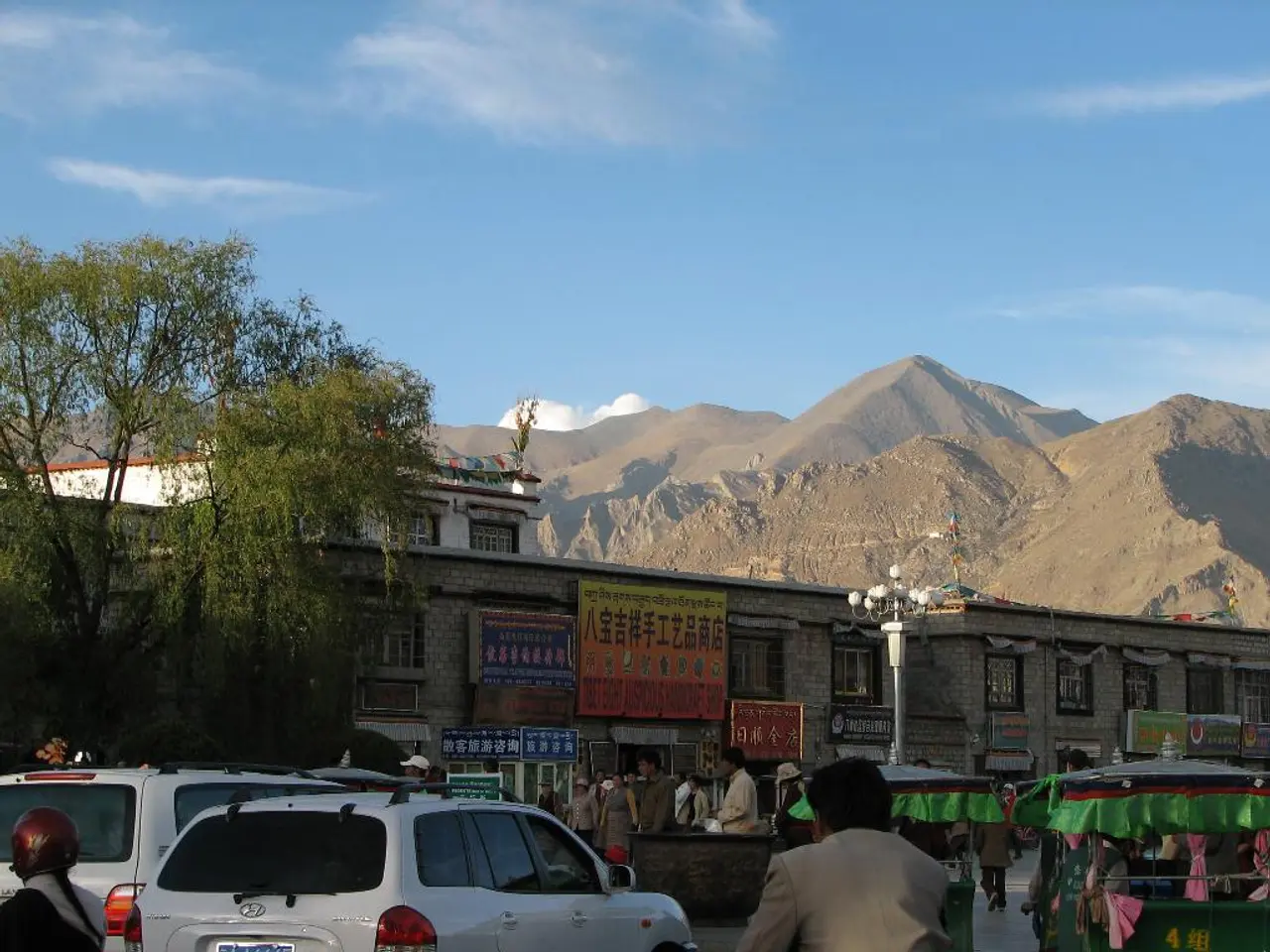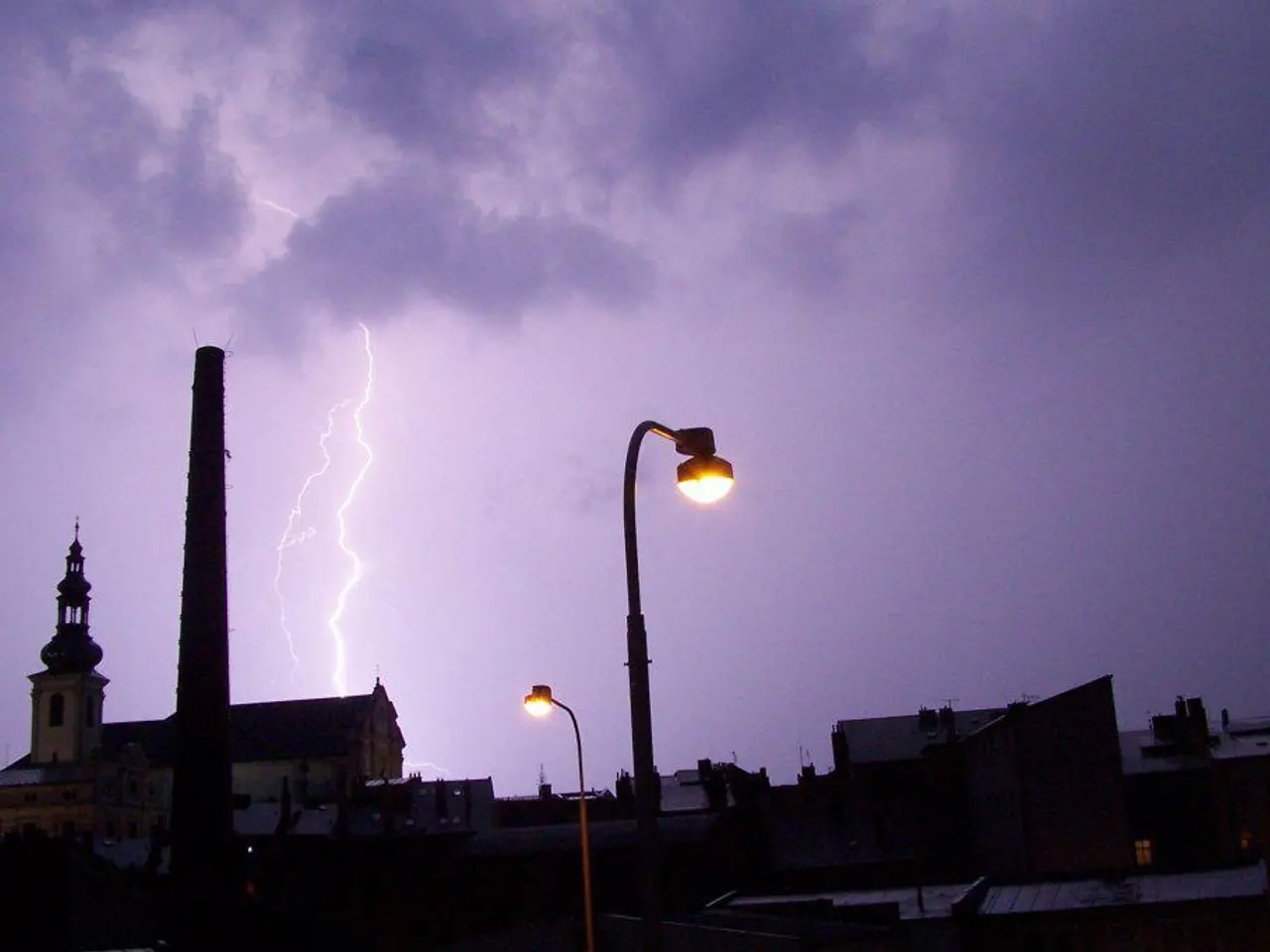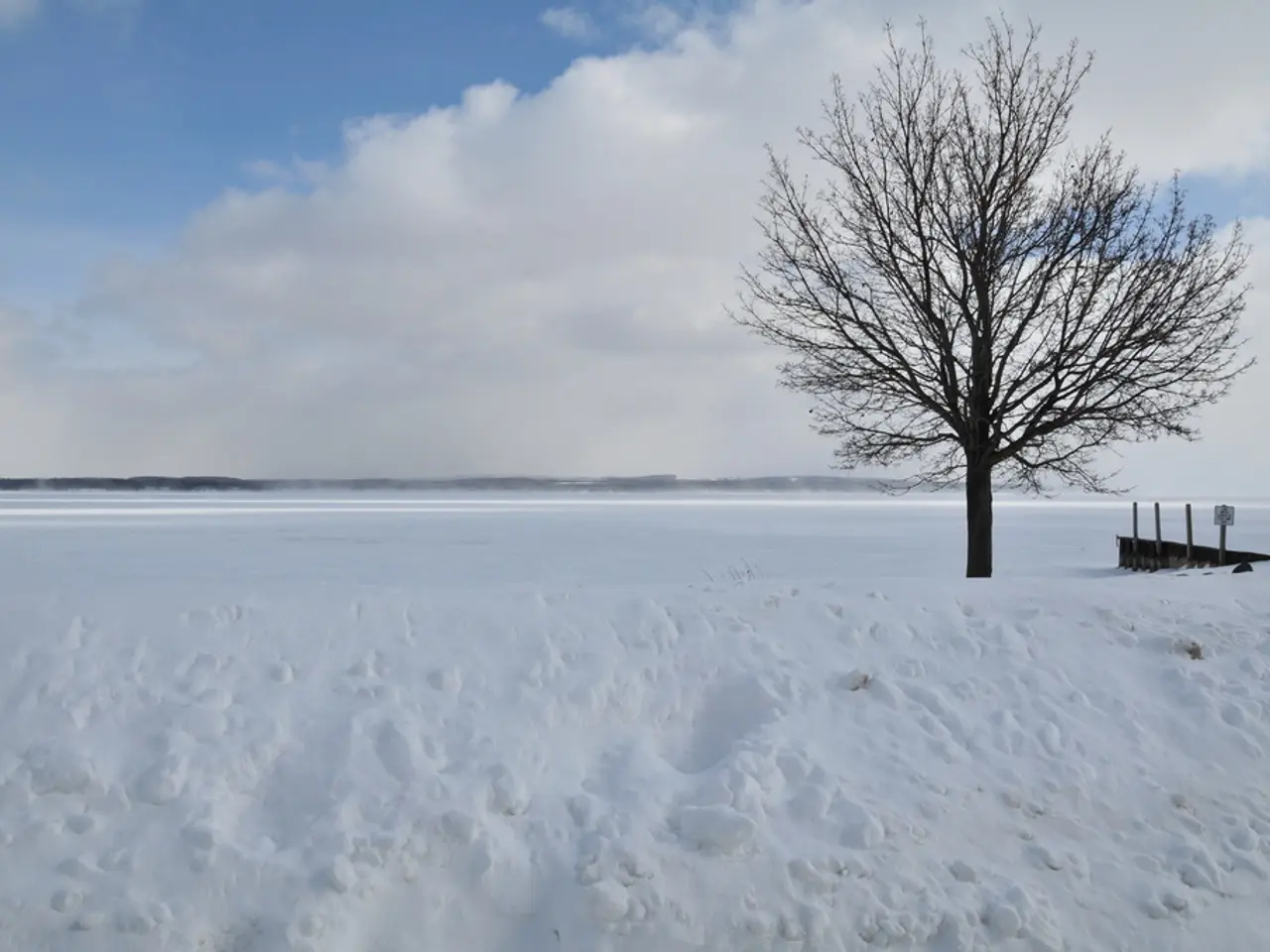Mountain huts in Tyrol district were evacuated via helicopter following the storms
In the heart of the Tyrolean Alps, a severe storm has left a trail of destruction, particularly in the Gschnitztal valley. On Monday evening, dozens of people were evacuated from the affected village of Gschnitz and three mountain huts - Bremerhütte, Innsbruckerhütte, and Tribulaunhütte - by a helicopter from the Austrian Armed Forces[1][3][4].
The storm, which triggered landslides and mudslides, made hiking trails and roads impassable, isolating the affected areas[1]. The mudslide covered homes and mountain huts, and when the Gschnitzbach creek burst its banks, flooding occurred. Although no injuries were reported, considerable damage was inflicted, including the devastation of an open-air museum featuring watermills[1].
Mayor Andreas Pranger of Gschnitz, with approximately 400 inhabitants, confirmed the evacuation to the Austrian Press Agency (APA)[2]. Residents were instructed to remain indoors, avoid underground garages and basements, and stay away from dams on creeks as emergency services closely monitor the situation[1].
Elmar Rizzoli, the crisis manager of the province of Tyrol, reported that efforts are underway to clean houses in Gschnitz from the mud caused by the landslide[3]. Initially, authorities announced the evacuation of 100 people, but the number was later revised as the descent from one of the huts in the storm area was ultimately possible[5].
Apart from Gschnitz, the municipalities of Neustift in the Stubai Valley and the district of Landeck were also affected by landslides[6]. The province of Tyrol announced these landslides[7]. The evacuation, a serious response to protect residents and visitors from ongoing risks associated with the storm and landslides, reflects the urgency of the situation[1].
The Tyrolean mountains are located near the Brenner Pass, a major European transit route. The authorities' swift action underscores their commitment to ensuring the safety of all those living and visiting the region.
[1] Austrian Press Agency (APA) [2] Austrian Press Agency (APA) [3] ORF station [4] ORF station [5] Austrian Press Agency (APA) [6] ORF station [7] ORF station
1) The severe storm in the Tyrolean Alps, affecting areas such as Gschnitz, has raised concerns in the environmental-science community, as the weather event led to environmental destruction through landslides, mudslides, and flooding.
2) In the aftermath of the storm, efforts in the field of science, particularly environmental-science, will be crucial to assess the impact on the local ecosystem and devise strategies for future mitigation and recovery.







